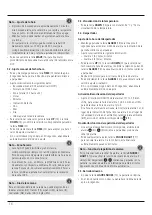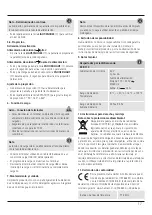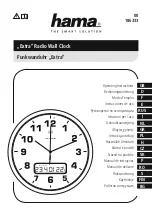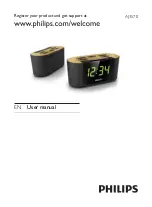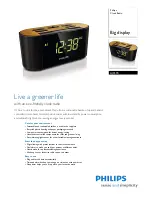
3
Warning – Batteries
• Remove the batteries from products that are not being used
for an extended period (unless these are being kept ready for
an emergency).
• Do not short-circuit batteries.
• Do not charge batteries.
• Do not throw batteries in a fire.
• Keep batteries out of the reach of children.
• Never open, damage or swallow batteries or allow
them to enter the environment. They can contain toxic,
environmentally harmful heavy metals.
• Avoid storing, charging or using the device in extreme
temperatures and extremely low atmospheric pressure (for
example, at high altitudes).
4. Getting Started
Warning
• Connect the product only to a socket that has been approved
for the device. The socket must be installed close to the
product and must be easily accessible.
• Disconnect the product from the network using the power
button – if this is not available, unplug the power cord from
the socket.
• When using a multi-socket power strip, make sure that the
sum power draw of all the connected devices does not exceed
its maximum throughput rating.
• If you will not be using the product for a long period of time,
disconnect it from mains power.
4.1. Inserting the batteries / connecting the power supply
• Connect the power supply unit to the power supply unit
connection socket (20) on the back of the radio-controlled
alarm clock.
• Connect the power cable of the radio-controlled alarm clock to a
properly installed socket.
• The radio-controlled alarm clock switches on automatically.
• Alternatively, open the battery compartment (21), insert two
AAA batteries with the correct polarity and close the battery
compartment cover.
Note
• If the batteries are inserted correctly and you connect the
power supply unit to the alarm clock, the radio-controlled
alarm clock will automatically switch to the external power
supply.
• Sustained projection is only possible on mains power
4.2. Replacing the batteries
• Open the battery compartment (21) on the back of the product.
• Remove and dispose of any used batteries. Insert two new
batteries (AAA). Ensure that the polarity of the battery
corresponds to the symbols in the battery compartment.
• Close the battery compartment (21).
5. Operation
Note
Hold down the
UP
button (14) or the DOWN button (15) to
select values faster.
5.1. Setting date/time automatically using the DCF signal
• Once you have inserted the batteries or connected the power
supply unit, the display is switched on, an acoustic signal sounds
and the alarm clock automatically starts searching for a DCF
radio signal. During the search, the radio symbol (3) flashes. This
process can take around 7 minutes.
• When the radio signal is received, the date and time are
automatically set.
Display
Searching for the DCF
signal
Display flashing
Active
Display steady (not flashing) Successful – signal is
being received
Not displayed
Inactive
Weak signal reception
If the station still does not receive a signal, press and hold the
WAVE
button (16) for approx. 3 seconds to start the manual search
for the DCF signal. The radio icon (3) starts to flash.

















